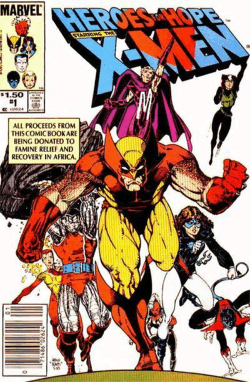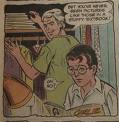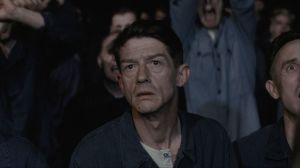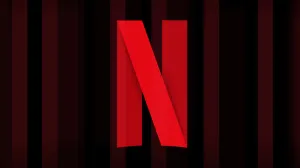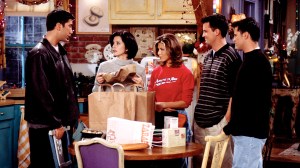Videos by ComicBook.com
As hokey as these shows sometimes were, and let’s face it, After School Specials were no showcase of solid acting chops usually themselves, they often broughtattention to causes or needs that may have been overlooked by the target demographic; the molestation episode of Diff’rent Strokes, for example, is often credited with helping raise awareness about the warning signs of a pedophile. Kids, a big part of that show’s audience, certainly benefited from this sort of portrayal.
Comic books are no exception to this phenomenon. Just like sitcoms, comics have stepped out of their fictional worlds to address real problems or issues, usually in a special one-shot, a ‘special issue’ of a continuing storyline or an endorsed issue by a group or organization. Sometimes it works and has an impact. Oftentimes, it can be a bit odd and angst-ridden, lending an unintentional air of camp to the issue and its goal. Listed below are some memorable cause comics and their possible pluses and minuses.
Amazing Spider-Man #36The Issue: 9/11
Narratively and visually arresting, this issue of ASM confronts the tragedy of September 11th by reminding us that there are some types of evil that are beyond explanation and comprehension, even for beings of super strength and intelligence. From the near lack of dialogue, to the image of some of Marvel’s toughest villains emotionally struck by what they have witnessed, we are taught a lesson of true heroism and strength, as the issue’s final pages pay tribute to the heroism of our real-world heroes: police, fire and rescue forces, soldiers, and many others. Spider-Man operates out of New York, not Gotham, Keystone or Star City, and this issue achingly displays that reality while honoring those who gave their lives that day and the ones left behind to mourn and carry on.
Heroes for Hope Starring the X-Men One ShotThe Issue: Hunger in Africa
On the opposite side of the dimension from Amazing Spider-Man #36 is this strange 1985 concoction. In their full 1980’s regalia, Magneto’s “M” uniform, Storm’s Mohawk, the X-Men travel to Africa to fight against an entity powered by hunger. There are a host of writers brought in to write the various aspects of the piece, as each X-Man has a scene where they battle a demon, a personal issue or one wearing a cape. There are some gripping visual depictions of various scenes of hunger and suffering, but the overall piece loses its heft when paired with some heavy-handed metaphors and a long speech about hope at the end. It’s a good thing all the proceeds went to combat hunger and recovery in Africa, as this is a bit too hokey. It’s still better than the next entry though, and you can’t deny some of the small pieces of great writing that Marvel used.
DC Comics: Heroes Against HungerThe Issue: Hunger
Not to be outdone, DC released Heroes Against Hunger in 1986. With Lex Luthor on the cover dressed in his 1980’s highlighter outfit, decrying Superman’s inability to save the waves of hungry around him, this artist and writer laden arc begins. After an initial dressing down by a Peace Corps worker, Superman begins the task of working with Batman on discovering just what Luthor is up to this time. There are a couple of good moments here, such as Lex being humbled by the sight of famine and pain, but with an inter-dimensional monster that feeds on pain and despair, a petulant Luthor concerned with what Superman said about him, and some bizarre battles with said pain monster, the whole affair comes up short. When Luthor tries to work with Supes and Bats to restore crops in Africa and then nothing happens, they are taught a humble lesson about the destruction mankind has wrought on the land and the long road they have to go. Again, a noble intention, but the angle about the monster who “loves Ethiopia” because it’s the center of world suffering and who has to be sent through a portal to dispose of him is a bit insulting to the comics world and the plight of the hungry.
The New Teen Titans: Drug Awareness CampaignThe Issue: Children and drug use
Ah poor Jesse. Right away in the first five pages we see him smoking ‘dope’, being forced to attend a speech by the Teen Titans on the dangers of drugs and then he angrily storms out with the ever forceful “leave me alone” statement to his parents. Raven tries to intervene with an out of control Jesse and ends up absorbing the effects of the drugs (huh) and going on a frenzy that lands her in battle with the other Titans. Raven’s fights quickly become an allegory for Jesse, and he decides to turn over a new leaf. The book gets a bit heavy-handed with a sermon by The Protector to both parents and kids about what their responsibilities are in regards to avoiding drug abuse. The Titans go on to battle the local pushers, Jesse tells off some users in the middle of the schoolyard (where’s the principal by the way), and the parents are told to get with the program to help. There’s even an interesting free-response section in the back of the book for kids to record their thoughts on the issue. An interesting feature in this uneven message comic.
Spider-Man and Power Pack One ShotThe Topic: Child abuse/ sexual abuse
This special issue, sponsored by the National Committee for the Prevention of Child Abuse, does a pretty effective job of not only helping to educate children as to what might constitute child and sexual abuse. In the story with Spider-Man, a young boy confesses to Spidey that his babysitter has done some disturbing things to him. Spidey tells him a story about something similar that happened to him when he was younger involving a neighbor boy and a nudie magazine. The boy, Tony, learns that it’s ok to talk about this and that he has nothing to be ashamed of, a great lesson for kids reading this. Power Pack’s story is a bit more difficult emotionally. Jane, a friend of the Power children, has left home due to her father’s abuse of her and an argument sparked between dear ol’ mom and dad when the issue comes up. The Power kids intervene and Mrs. Power provides some info on counseling to help the family at the end of the story. This issue is pretty sophisticated overall and has some good resources for kids who may find themselves in this terrible situation.
Green Lantern #76The Issue: Racism
This issue is key for several reasons: the addition of Green Arrow, the start of the socially-conscious O’Neil/Adams issues, and for bringing the issue of post-Civil Rights era racism smack into the DC Comics universe.In this issue, a black man approaches GL and recounts all the good things the Lantern has done for all types of people across the galaxy, except, notably, the “black skins” back home.When pressed to give an explanation, Hal Jordan simply hangs his head and says “I…can’t.”It’s a small collection of panels, but, as with ASM #36, it reminds us of the reality we as readers create for these heroes.Yes, comics are an escape, but with Adams artwork in this issue, we are reminded that a return to reality is always expected.Even though O’Neil and Adams would only get to do a few more issues together, Speedy’s addiction to heroin another big event, this issue stands out for its courage and maturity.
You don’t see too many comics like this today, and perhaps that’s due to the more adult subject matter seen in mainstream comics anyway. Today it’s nothing for a character to have issues with literacy, abuse, drug use, an eating disorder, or another malady.Perhaps the ‘very special issue’ has become a quaint marker of the 1980’s, a decade where self-involvement was so high that fiction had to carve out a niche every once in awhile to make people pay attention to what’s important in the world. Either way, the medium is worth the revisit now and then.

